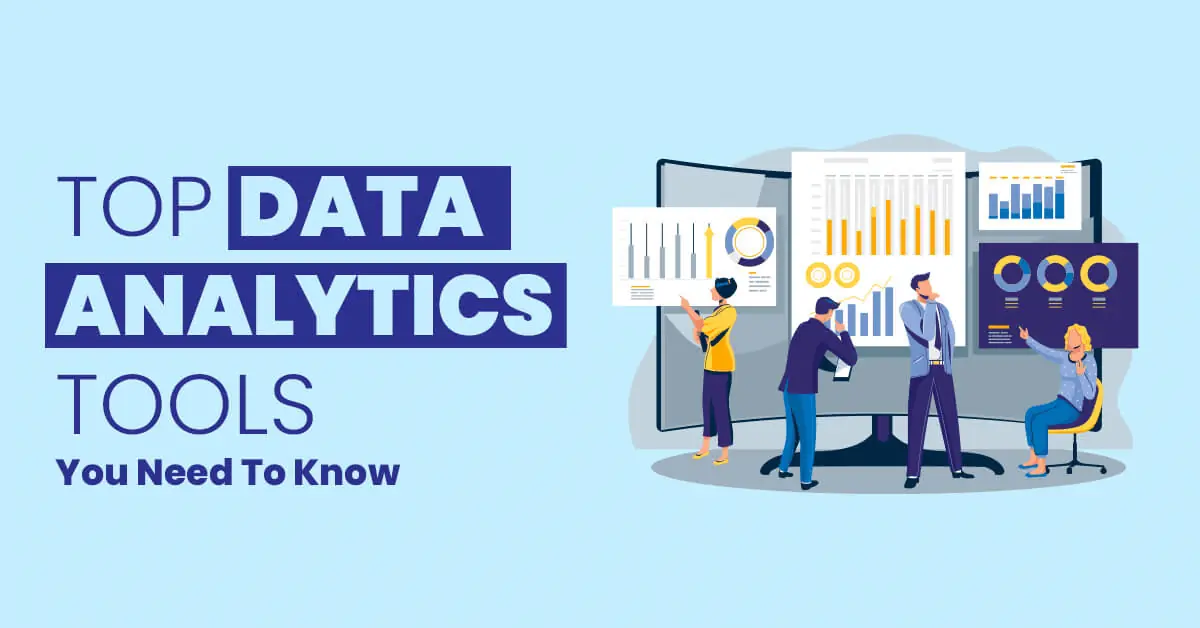Top Data Analytics Tools Every Analyst Should Know
 Muskan
Muskan
From gathering insights to predicting trends, data analytics tools empower professionals to transform raw data into actionable intelligence. Whether you're an experienced analyst or just starting out, knowing which tools to use can make all the difference in your career. This article will explore the top data analytics tools every analyst should be familiar with, and how a Data Analytics Training Program in Noida can enhance your skills in using these tools effectively.
1. Microsoft Excel
It may seem basic, but Microsoft Excel remains one of the most widely used data analytics tools. With features like pivot tables, advanced charting, and functions like VLOOKUP and INDEX-MATCH, Excel is a powerful tool for analyzing and visualizing data. It is often the first tool that data analysts learn, and it remains relevant for small datasets and quick analyses.
2. Tableau
Tableau is one of the leading data visualization tools in the industry, known for its intuitive interface and ability to create dynamic, interactive dashboards. It supports integration with multiple data sources, including SQL databases, cloud services, and spreadsheets. For analysts looking to communicate their findings visually, Tableau is a must-have tool. The tool's ability to transform raw data into insightful visuals makes it indispensable for business intelligence.
3. Power BI
Microsoft’s Power BI is another powerful tool for data visualization and business intelligence. It enables analysts to connect to a wide variety of data sources, perform transformations, and create interactive reports. Power BI is particularly favored for its integration with other Microsoft products like Excel and Azure. It is an excellent choice for organizations already using Microsoft products extensively.
4. Google Analytics
For digital marketers and web analysts, Google Analytics is a cornerstone tool. It provides in-depth insights into website traffic, user behavior, and conversion metrics. While it’s widely recognized for tracking website performance, Google Analytics can also be used to analyze marketing campaigns, social media engagement, and user demographics. Learning how to leverage Google Analytics is essential for anyone working in digital analytics.
5. R Programming
R is an open-source programming language that has become a standard for statistical computing and data analysis. Its extensive package library and advanced analytical capabilities make it perfect for those who need to perform complex data manipulations, statistical tests, and modeling. R is particularly popular in academia and research but is equally powerful for business analytics, especially for predictive analytics and data visualization.
6. Python
Python is another essential tool for data analysts, offering an open-source ecosystem with extensive libraries like Pandas, NumPy, Matplotlib, and SciPy. It’s known for its versatility, making it suitable for a wide range of data analytics tasks, including data cleaning, visualization, and machine learning. Python is a popular choice for analysts and data scientists working with large datasets and advanced analytical techniques.
7. SQL (Structured Query Language)
SQL is the foundational language for querying and managing relational databases. Whether you’re working with MySQL, PostgreSQL, or Microsoft SQL Server, SQL is essential for extracting, manipulating, and analyzing large datasets stored in databases. Data analysts need to be proficient in SQL to efficiently work with relational data and perform tasks like filtering, joining, and aggregating data.
8. SAS
SAS (Statistical Analysis System) is a software suite used for advanced analytics, business intelligence, and predictive analytics. While it may be more complex and expensive compared to other tools, it is widely used in industries like healthcare, finance, and government for its powerful data manipulation and statistical analysis capabilities. SAS is a great tool for analysts looking to work with large, complex datasets and perform advanced statistical analyses.
9. Apache Hadoop
For analysts working with big data, Apache Hadoop is one of the most crucial tools in the toolkit. Hadoop is an open-source framework that allows analysts to process large datasets across distributed computing clusters. It’s designed for high-volume, high-velocity data, making it ideal for industries dealing with massive amounts of data, such as retail, finance, and telecommunications.
10. RapidMiner
RapidMiner is a comprehensive data science platform that supports the entire data science lifecycle, from data preparation to model deployment. It features drag-and-drop functionality for those who aren’t well-versed in coding but still want to perform advanced analytics. It’s an ideal tool for analysts looking to dive into machine learning without needing a deep understanding of programming.
Conclusion
Data analytics tools are the backbone of modern businesses, helping organizations extract valuable insights from vast amounts of data. Whether you’re just starting or looking to enhance your expertise, mastering these tools is crucial for success in the data analytics field. By enrolling in a Data Analytics Training Program in Delhi, Noida, Lucknow, Meerut, Indore, and more cities in india you can gain the knowledge and hands-on experience needed to excel and stay ahead of the curve in this fast-evolving industry. Don’t let the opportunity pass you by—start building your data analytics skills today!
Subscribe to my newsletter
Read articles from Muskan directly inside your inbox. Subscribe to the newsletter, and don't miss out.
Written by
